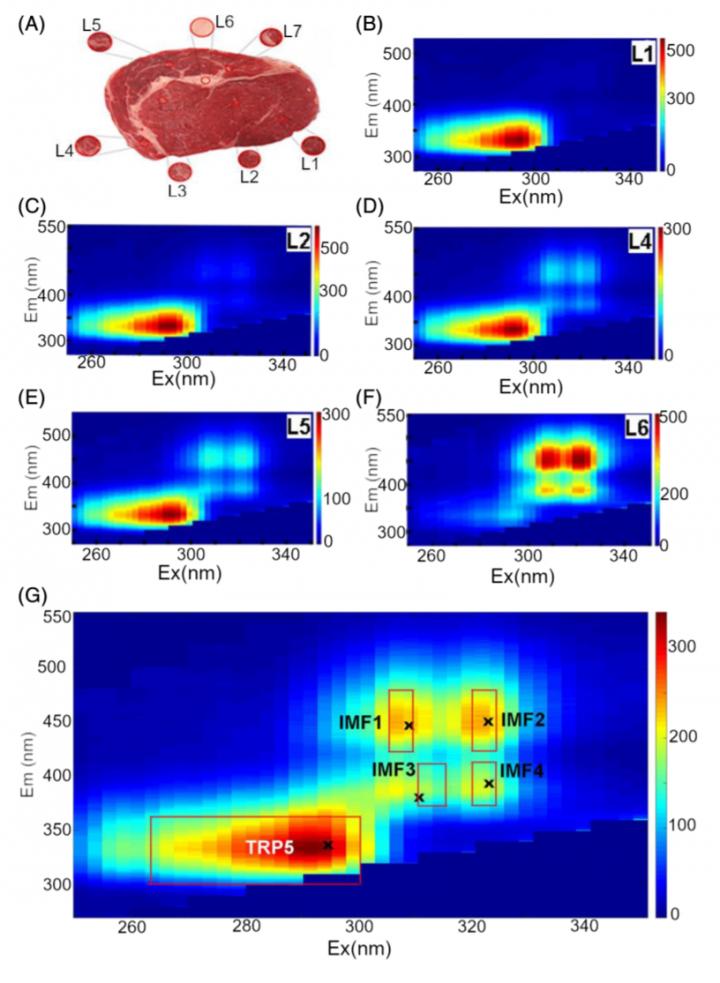UV light exposure not only kills microorganism, it can also assess meat quality. A research team with scientists of Sechenov University in Russia, Macquarie University and University of New South Wales in Australia proposed a method incorporating UV light emission to classify meat into standard quality categories. The study was published in Journal of Biophotonics under the title “Autofluorescence excitation-emission matrices as a quantitative tool for the assessment of meat quality.”
Conventionally, to evaluate the quality of beef, specialists pay attention to its color, pattern of the fibers (marbling), carcass weight, and more. But such measurement is time-consuming and relies on a subjective opinion of the experts to a significant extent.
Therefore, fluorescence spectroscopy becomes an alternative. The team developed a method based on exposing a small sample to UV light and measuring the spectrum of emission. Fluorescence spectroscopy is capable of detecting and measuring the concentration of various compounds that can emit light of a specific frequency range. These substances include many organic molecules which can be found in meat.
Researchers linked the spectrum of the fluorescence of meat with its quality defined by 3 categories from low to high: MSA3, MSA4 or MSA5. The results were additionally validated by histological (cell and tissue) analysis of the samples and measuring the concentrations of water and fat in them.

(Image: Islam K et al. 2019)
Researchers cut six samples from different sites of the meat steaks, each of about 8 mm in diameter and exposed the samples to the light with the wavelength of 250-350 nm (near and middle ultraviolet), then they measured the spectrum of the fluorescence in a range of 285-635 nm (from middle ultraviolet to the border between visible light and infrared). The intensity of the emission was set on the matrix 'frequency of excitation - frequency of emission'.
The results showed that the spectra of fluorescence of the samples with various ratios of muscle and adipose tissues are discernible. The authors selected features that enabled them to define the category of any piece of meat. For example, the highest quality meat (MSA5) has the most intensive fluorescence and can be distinguished from the lower quality samples by the difference in brightness of various ranges.
“This work shows the new opportunities to evaluate the quality of meat objectively by LED illumination and registration of the tissue optical response. It's interesting to note that this technology, having being originally developed for the meat industry, can be further translated into medicine and biomedical research,” said Dr. Anna Guller, senior research fellow of Sechenov University. “Therefore, our study can be considered as a possible step towards non-invasive and pain free diagnostics in medicine as well,” she added.












